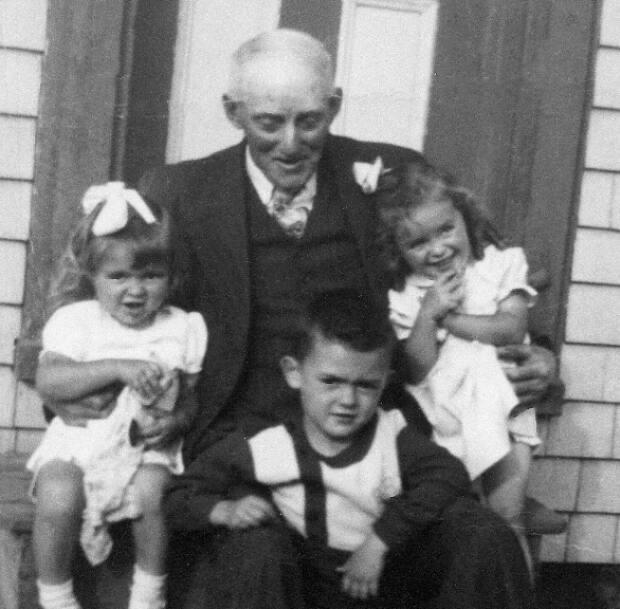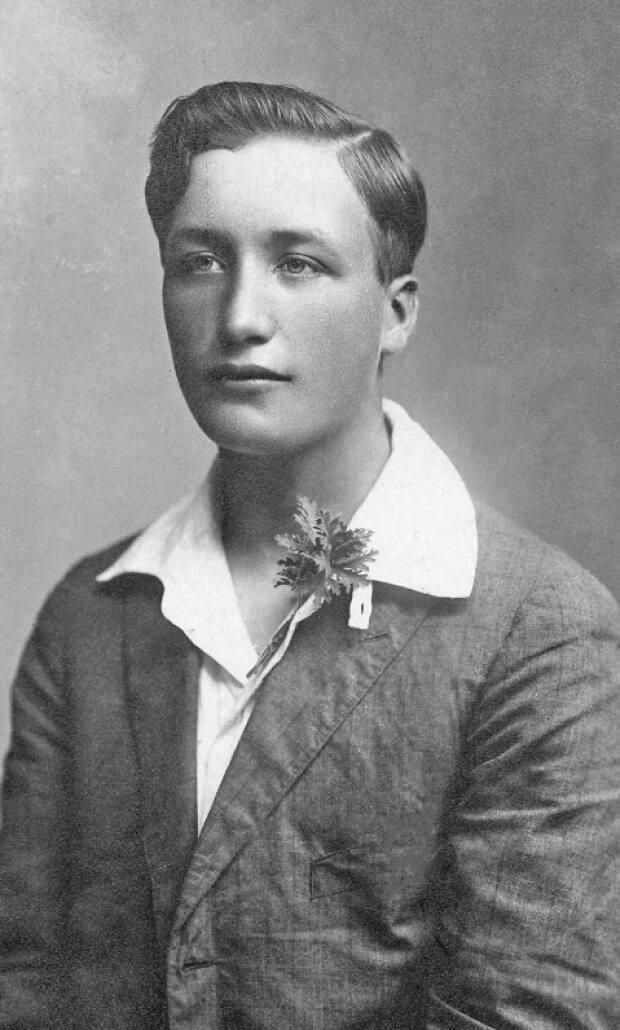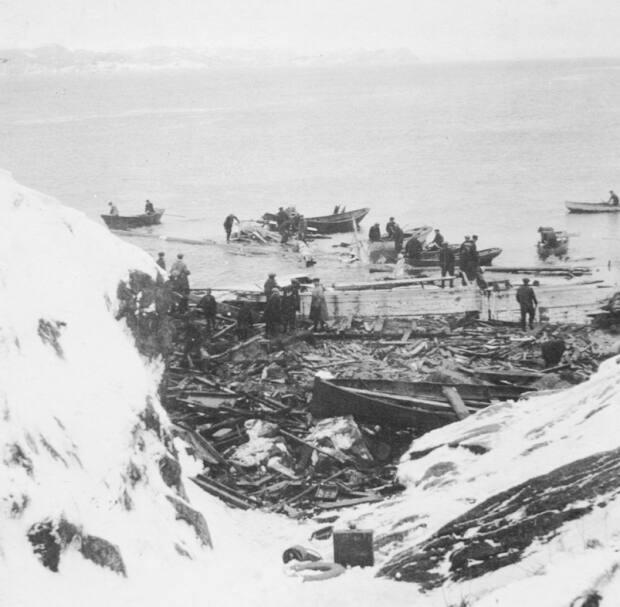The schooner Russell Lake was lost 94 years ago, but its traces can still be found in Burgeo


There were six in the crew, but only one man survived when the tern schooner Russell Lake was smashed to pieces while entering Burgeo harbour in a blinding snowstorm on March 17, 1929 — nearly 94 years ago.
A few days later George T. Day — the three-masted vessel's bosun, or the ship's officer in charge of crew — sat down with T.L. Banfield, the wireless operator in Burgeo, and related to him his terrible experience of clinging, along with the cook, to a piece of the hull of the wrecked vessel for seven hours and watching his captain and four shipmates being swept to their death.
The first-hand account of the 41-year-old seaman's survival was carried on the front page of a newspaper of the day, the Liberal Press, on March 30, 1929.
Under the command of Captain Frank Stoodley (my father's half-brother — they had the same father), the Russell Lake left Fortune to finish loading fish at Burgeo for Oporto, Portugal, stopping first at St. Pierre for supplies. The ship left the French island on March 16, and soon after the weather worsened, with winds increasing to gale force and snow squalls reducing visibility.

"We passed New Harbour just as the light was being lit and I wondered if the captain would harbour there; but as the wind was fair and then it blew hard, he decided to continue on to Burgeo. It came thick with snow as we neared Burgeo — the first land we saw was Red Island Head and got a glimpse of Boar Island Light," Day explained in the interview. (Red Island Head is about three miles from anchorage in Burgeo Harbour.)
"It then shut in thick with glitter and the captain took the main sail down — the only sail we had up then — and told us to get the anchors ready. We slacked one down, ready to drop at the command. A few minutes after that we struck bow on — it was then about midnight," continued George.
As soon as the ship hit, he said, the captain rushed into the cabin and returned with a gun that he fired to alert the people on shore.
"There was a wonderful sea on and instantly the vessel careened over on her side, carrying the spars away and taking the captain and three men overboard. I don't know if they were struck by any of the wreckage, because in the dark it was difficult to know just how they went," said George.

"The cook and I hung onto a section of the stern as the vessel was smashing up in pieces. Fortunately that particular part did not give way until dawn — when it did begin to break up I suggested to the cook that we crawl forward thru the wreckage to a place I saw was suited better for holding on."
The interviewer asked him if they were in danger of being washed off by the sea. Day replied, "Yes, at times; but the spars peculiarly fell on the off side and broke the seas a great deal.… We reached the part I had in view and put our legs thru a hole in the bulwarks [mariners call these floodgates] and there we hung on with the cold spray going over us until some fishermen saw us and started out in a small boat."
It was about three in the morning — no electricity, only lanterns and row dories. Former Burgeo mayor Allister Hann told me his father James Hann, who was living on nearby Collier's Island heard the shouts for help. He got Hartley Kendall and then rowed to Small's Island to get an older, more experienced seaman: captain Jimmy Buckland. Kendall's son, Doug, told me recently that Buckland would "count the swells" and when the water in the gut would smooth out, he would shout the command to the other two rescuers to "row, row row."
Day continued, "I could see we were on the back of Small's Island in Burgeo. The rescue boat could not come near us for the sea and the wreckage consisting of spars, topmasts, rudder, ropes and wires twisted into all shapes separated us from the boat."

A line was thrown to them, he went on.
"I tied the line around the cook first and tried to help him over the wreckage but he was all in and being exhausted myself I did not have the strength to help him. He succumbed and when he fell down among the mass of wreckage I untied the line from him and tied it around myself and started to get through the debris.
"Floundering down to my neck in water and pulling myself up I managed to reach one of the spars, which I jumped clear of in the water. A big sea was running then but the men in the boat hauled me in despite the danger of being swamped."
The men who risked their lives to carry out the rescue of George Day were captain James Buckland, James Hann and Hartley Kendall, all from Burgeo.

As the news spread and the sea went down, men and more boats were soon on the scene to try to recover the bodies of the five seamen.
The Russell Lake did not have any auxiliary power — only the wind in its sails, with anchors to slow her down. Part of the cause for the vessel going to pieces so fast was due to the fact that she did not carry wet fish, only dry fish, resulting in her timbers being very dry.
All of the bodies were recovered, four on Sunday and the captain's body on Monday morning. They were taken to the Orange Hall, where the coffins were decorated nicely to await the arrival of the coastal boat S.S. Daisy, which transported them to Fortune and Grand Bank.
The deceased mariners were captain Frank Stoodley of Grand Bank, married with one child; mate Ronald Martin of Fortune, married, no children; cook William Spencer of Fortune, married, no children; sailor George Witherall of Fortune, married, no children; sailor Leo Foote of Lamaline, single. Sailor George T. Day of Fortune, the only survivor, was the father of seven children.

The Russell Lake, built in Fortune in 1917 and registered in 1919 at St. John's, was a three-masted wooden vessel of 149.87 gross tonnage, measuring 96.6 feet long. She was built for the European trade and carried large and sundried salt fish to Portugal and Spain.
After the shipwreck, George T. Day bought his own dory and stage and went inshore fishing out of Fortune. His wife was Beatrice Thornhill of Fortune; they had nine children, but two died in infancy, and Day died in 1959 at the age of 70.
George T. Day's daughter, Sarah, finished teacher training in 1944, went to Otter's Point to teach, and then moved to Burgeo, where she married Gilbert Melbourne in 1950. They were the parents of five boys, two of them still living in Burgeo: Gus, 70, and Gilbert, 66.
Several years ago Gilbert took ownership of a shed that coincidentally had two blocks in it — pieces of block-and-tackle — which had been salvaged from the wreck of the Russell Lake. He gave them to his two sons as "a good luck charm" — a reminder for them of the ordeal their great-grandfather endured.

